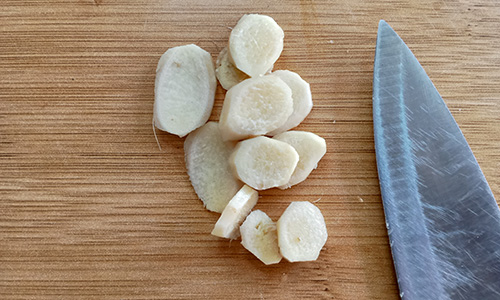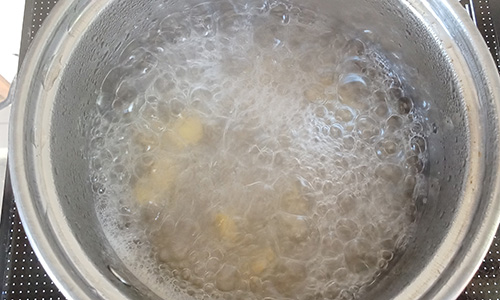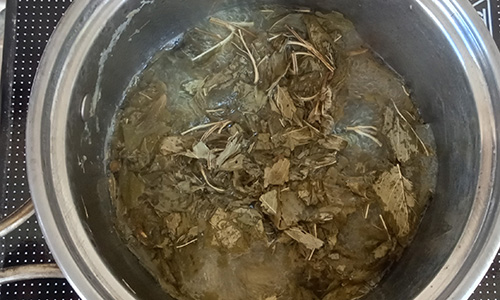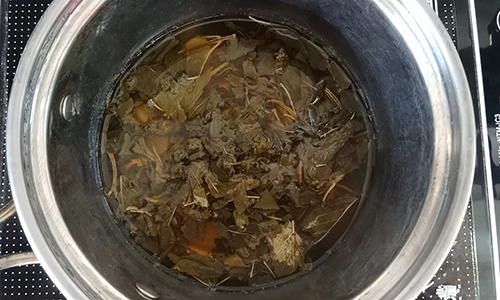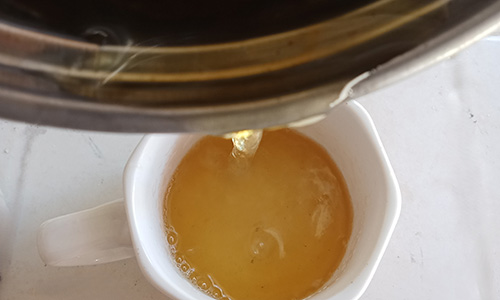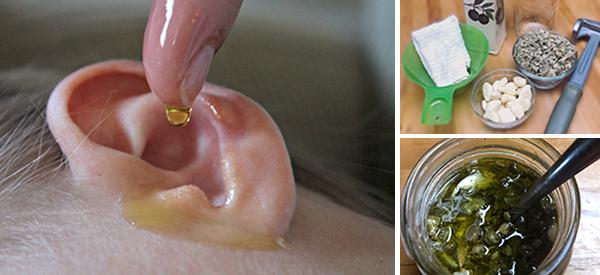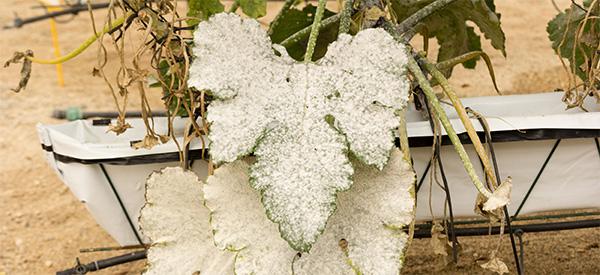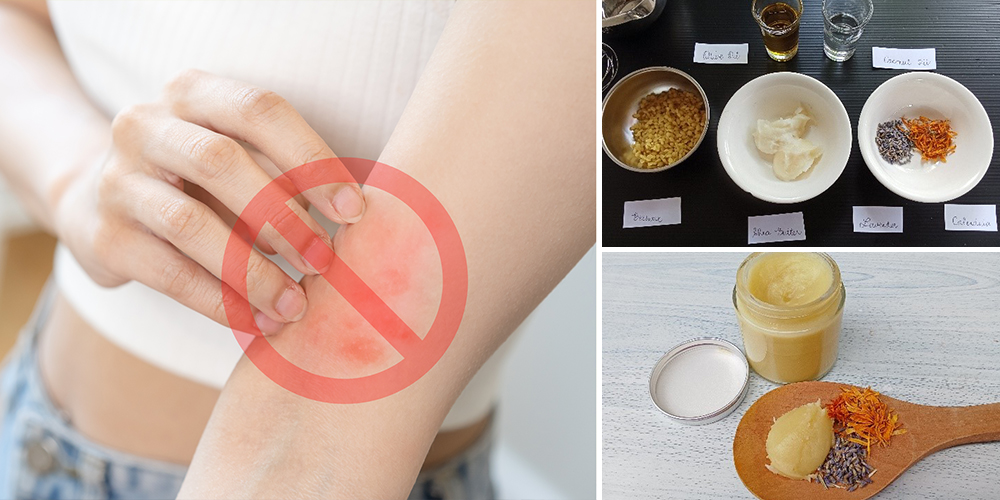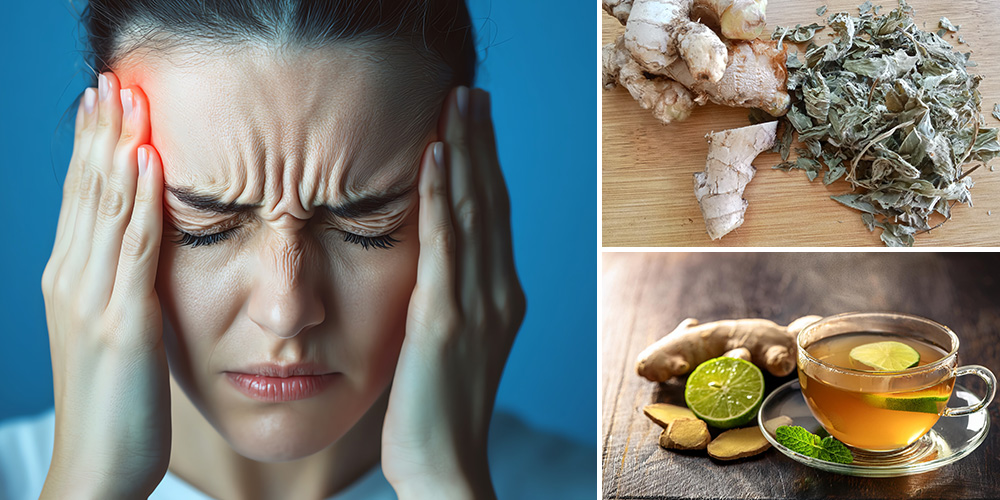
Forgotten Remedies to Get Rid of Migraines
Nothing beats a headache faster than a steaming cup of coffee — at least for some people.
While coffee drinking is mainly shaped by culture and lifestyle, its role as a migraine remedy is sometimes given little thought. It is one of the most effective natural remedies for ocular headaches, often due to caffeine withdrawal or missing a daily cup.
There are also many remedies for migraine headaches aside from coffee. Some of these were forgotten in favor of acetaminophen and other OTC painkillers. But these herbs have worked for many generations in relieving different kinds of pain.
Causes of Migraines
A migraine is a health condition or neurovascular disorder characterized by sharp and throbbing head pain. It sometimes comes with accompanying symptoms such as nausea and vomiting. However, migraine is varied and is only used as an umbrella term for various head pain.
Migraine attacks vary from individual to individual. Sometimes, they cause blurry vision, blind spots, photosensitivity, sound sensitivity, and irritability. Migraine pain may also occur anywhere in the head, most commonly around the eyes or on one part of the head.
A migraine headache varies in severity and duration, sometimes lasting from 4 hours to 72 hours or more.
Its causes are varied and may include:
- Hunger
- Overexposure to computers and gadgets
- Lack of sleep or oversleep
- Stress
- Hormonal change
It may not be a common fact, but genetics also play a role in the occurrence of migraine, with heritability estimates of 34 to 64%.
Remedies for Migraines
With genetic migraine, the least you can do is to prevent triggers. The triggers vary in individuals and may include specific diet, emotions, medical and environmental factors. If you think migraine occurs whenever you are stressed, avoid situations that stress you out.
The unconventional ways to get rid of migraine include:
- Acupressure
- Acupuncture
- Meditation and relaxation techniques
- Hydration
- Cold compression therapy
- Stress management
Forgotten Remedies for Migraines
It is difficult to sleep with a nagging headache. That is why many people choose the easy way out with painkillers. OTC meds are undeniably effective but may cause some side effects. The most common are dry mouth, upset stomach, nervousness, and temporary sleep problems.
Frequent use of painkillers may also cause severe and long-term side effects like memory loss, cognitive decline, and organ damage.
The worst thing that analgesics cause is overdose and dependency. It can trigger rebound headaches, which means migraine gets worse over time, and users become reliant on using them.
Gentle ways of soothing migraine headaches have existed for many centuries in the form of herbs. Some have been forgotten with time, while others are known but are rarely used today.
Ginger
Ginger (Zingiber officinale) is a well-known home remedy for respiratory symptoms but is not often considered for migraine. It has excellent analgesic properties that relieve migraine and accompanying symptoms like dizziness and nausea.
Green Apple
Apple, particularly the green variety, may relieve tension headaches with its scent. Green apples contain flavonoids that normalize blood pressure and also reduce migraines. Inhaling the fresh scent of apples may significantly reduce headaches by reducing tension and stress.
Garlic
 Applying crushed garlic (Allium sativum) and olive oil paste on the forehead and temple may help ease migraine pain. Eating raw garlic may also improve the condition because of its vasodilatory effect that reduces blood vessel constriction to reduce tension.
Applying crushed garlic (Allium sativum) and olive oil paste on the forehead and temple may help ease migraine pain. Eating raw garlic may also improve the condition because of its vasodilatory effect that reduces blood vessel constriction to reduce tension.
Feverfew
Feverfew leaves (Tanacetum parthenium) may alleviate migraines and prevent their occurrence. They contain parthenolide, a chemical compound that tones the blood vessels to relieve pain. Feverfew acts as a general pain reliever with excellent analgesic properties.
Lemon
Lemon (Citrus limon) juice and zest may significantly improve migraine headache recovery. It is best taken hot and mixed with other analgesic teas and herbs. Inhaling the lemon scent from essential oil also helps tame headaches and motion sickness. Lemon water prevents dehydration, which contributes to head pain.
Turmeric
Turmeric (Curcuma longa) is one of the most recognized and studied herbal analgesics for alleviating various types of pain. Its active ingredient, curcumin, is an effective anti-inflammatory, antioxidant, anti-protein aggregate, and analgesic that may decrease migraine recurrence.
Cabbage
 A cabbage poultice is a forgotten migraine remedy that was mainly practiced in Polish traditional medicine. The inner leaves of a cabbage head are crushed and applied to the affected area for quick pain relief from migraine, mastitis, and rheumatism.
A cabbage poultice is a forgotten migraine remedy that was mainly practiced in Polish traditional medicine. The inner leaves of a cabbage head are crushed and applied to the affected area for quick pain relief from migraine, mastitis, and rheumatism.
Basil
Basil (Ocimum basilicum), if taken orally or applied topically, may reduce the tension caused by migraine. It is generally a muscle relaxant that soothes tight muscles and reduces tension in the nerve endings. Basil oil also counters fatigue and reduces stress to relieve head pain.
White willow bark
White willow (Salix alba) and its bark contain natural aspirin salicin, which relieves pain and eases inflammation. Native Americans used to chew willow bark whenever they felt any aches and pains. Boiling willow bark with ginger and drinking it twice daily protects against migraines from different causes.
Did you know white willow bark is often called Nature’s Aspirin? It’s been used for centuries to ease headaches, migraines, and pain—long before modern medicine existed. The bark contains salicin, a natural pain reliever that works wonders without the side effects of synthetic drugs.
It’s amazing what plants can do, isn’t it? The more I learn about herbs like white willow, the more I realize how much knowledge we’ve lost over time. Wouldn’t it be great to have all that wisdom in one place?
Turns out, someone thought of that too. There’s a book that brings together so many of these forgotten remedies. It’s called The Lost Book of Herbal Remedies II, and honestly, it’s the best addition to your bookshelf if you love natural health and self-reliance.
Peppermint
Herbal mint teas, like peppermint, work best in relieving pain and soothing the nerves. Peppermint (Mentha piperita) contains menthol, which inhibits and relieves pain. When applied to the skin, menthol distracts the senses for temporary pain relief.
DIY Migraine Remedy
Don’t let migraine get in your everyday functioning with this easy-to-prepare migraine relief tea. You may also take it to prevent migraine attacks from happening in the first place.
The tea is straightforward to make. It uses two common ingredients, ginger, and peppermint, which can be found in your local grocery store.
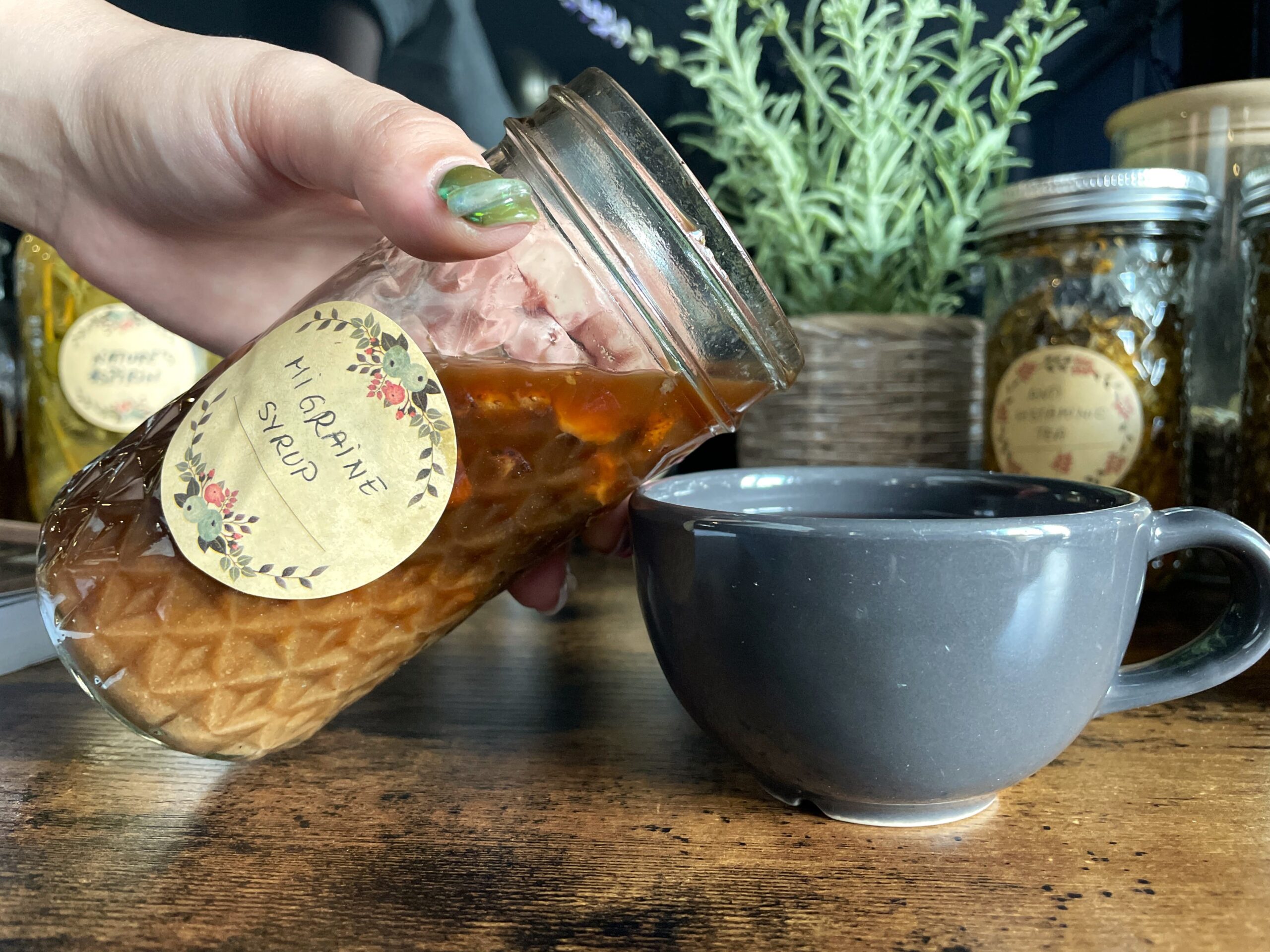 I took this recipe idea from this book I got a few weeks ago, I wasn’t going to recommend anything I haven’t tried myself… so now I’m sharing it with you since it works.
I took this recipe idea from this book I got a few weeks ago, I wasn’t going to recommend anything I haven’t tried myself… so now I’m sharing it with you since it works.
The book has thorough information about how to make this recipe as a syrup. Below I’ll show you how to make tea out of it. But the syrup also includes Feverfew, which is a great addition.
You may use either fresh or dried peppermint. Dried peppermint creates a more potent brew with a more distinctive aroma.
 Ingredients
Ingredients
- 1 (one-inch) fresh ginger root
- ½ cup peppermint leaves
- 2 cups water
Steps
- Cut the washed and peeled ginger root into thin coins.

- Boil water in a pot and add the ginger root coins, letting it boil for 10 minutes.

- Add peppermint leaves and turn off the heat.

- Let steep for 5 minutes.

- Pour or strain into a cup. Add honey and lemon if desired.

How To Use
Take a cup of ginger-peppermint tea at the onset of migraine attack. You may also inhale the steam as it steeps before drinking. The tea is also great for headaches caused by colds and flu.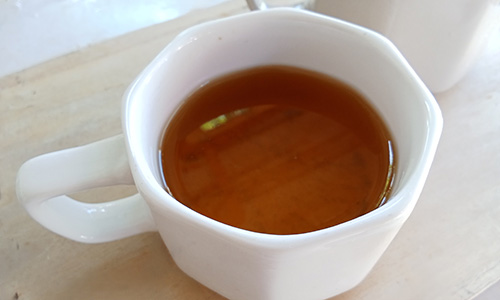
However, if you have a migraine, the last thing you want to do is stand in the kitchen making tea, right? When your head is pounding, you just need something that works—fast and without the hassle. That’s where this headache relief tincture comes in.
It’s crafted by one of America’s top herbalists using wild-harvested or organically grown herbs, so you know it’s as pure and potent as it gets. This tincture doesn’t just relieve migraines; it also eases anxiety and stress—two big culprits behind those nagging headaches.
Having this on hand means you’re always prepared, even on your worst days. No sourcing, no brewing—just a dropperful of relief whenever you need it.
Take Control of Your Health, Naturally
If you’re looking for simple, practical ways to manage your triggers, figure out what to eat and drink throughout the day, or make the changes that really matter, I’ve got just the thing for you.
It’s a book called The Holistic Guide to Wellness: Herbal Protocols to Common Ailments, and it’s a goldmine of easy-to-follow advice. Beyond the kind of info in this article, it dives into all sorts of fascinating topics, especially about the nervous system. You’ll find:
- How to care for your brain and nerves, including stroke and concussion recovery
- Protocols for Alzheimer’s, dementia, Parkinson’s, and depression
- Ways to ease stress, anxiety, vertigo, and even tinnitus
And that’s just scratching the surface. This book also tackles:
- Gut health and parasites (a game-changer for so many people)
- Autoimmune issues and how to manage them naturally
- Respiratory health
- Healing diets that work with your body
With 45 detailed protocols in total, this guide feels like having your own personal herbalist at home. It’s packed with simple steps and herbal wisdom to help you feel more in control of your health, no matter where you’re starting from.
Check it out here!








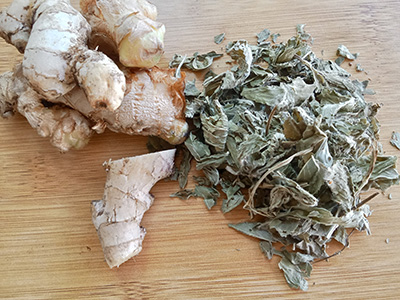 Ingredients
Ingredients